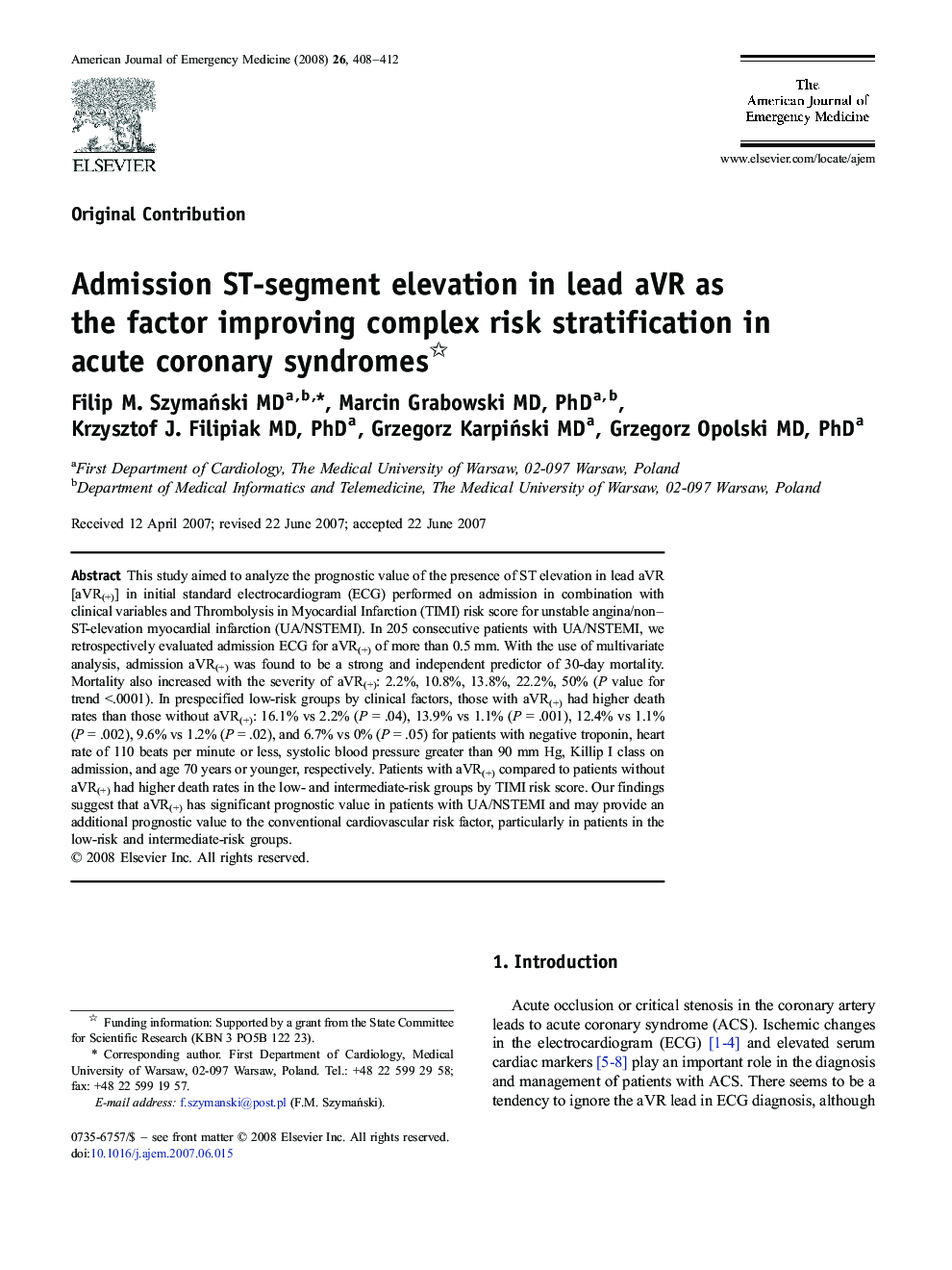| کد مقاله | کد نشریه | سال انتشار | مقاله انگلیسی | نسخه تمام متن |
|---|---|---|---|---|
| 3227497 | 1588177 | 2008 | 5 صفحه PDF | دانلود رایگان |

This study aimed to analyze the prognostic value of the presence of ST elevation in lead aVR [aVR(+)] in initial standard electrocardiogram (ECG) performed on admission in combination with clinical variables and Thrombolysis in Myocardial Infarction (TIMI) risk score for unstable angina/non–ST-elevation myocardial infarction (UA/NSTEMI). In 205 consecutive patients with UA/NSTEMI, we retrospectively evaluated admission ECG for aVR(+) of more than 0.5 mm. With the use of multivariate analysis, admission aVR(+) was found to be a strong and independent predictor of 30-day mortality. Mortality also increased with the severity of aVR(+): 2.2%, 10.8%, 13.8%, 22.2%, 50% (P value for trend <.0001). In prespecified low-risk groups by clinical factors, those with aVR(+) had higher death rates than those without aVR(+): 16.1% vs 2.2% (P = .04), 13.9% vs 1.1% (P = .001), 12.4% vs 1.1% (P = .002), 9.6% vs 1.2% (P = .02), and 6.7% vs 0% (P = .05) for patients with negative troponin, heart rate of 110 beats per minute or less, systolic blood pressure greater than 90 mm Hg, Killip I class on admission, and age 70 years or younger, respectively. Patients with aVR(+) compared to patients without aVR(+) had higher death rates in the low- and intermediate-risk groups by TIMI risk score. Our findings suggest that aVR(+) has significant prognostic value in patients with UA/NSTEMI and may provide an additional prognostic value to the conventional cardiovascular risk factor, particularly in patients in the low-risk and intermediate-risk groups.
Journal: The American Journal of Emergency Medicine - Volume 26, Issue 4, May 2008, Pages 408–412